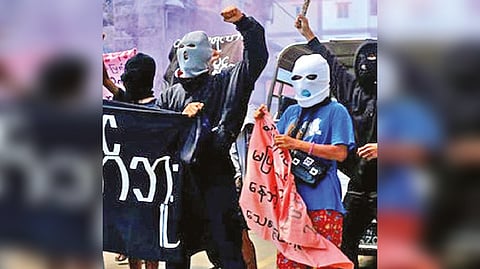

Enno Hinz
Myanmar’s junta is expanding its public surveillance capabilities by using facial recognition technology, raising fresh concerns about the safety of democracy activists and resistance groups in Myanmar. In March, Human Rights Watch (HRW) released a report on Myanmar’s use of the Chinese-made facial recognition systems, warning of a “serious threat” to human rights. HRW said hundreds of cameras were installed in townships around the capital Naypyidaw in December 2020, before the military took power in a coup, in the first phase of a security initiative called “safe city.” Cameras were also installed in Myanmar’s largest city, Yangon.
Experts and activists on the ground fear that the military’s increased access to this technology could have consequences for the safety of anyone opposing the junta.
A report by a news agency in July revealed that Myanmar’s military government is now expanding camera surveillance systems for cities in all 14 states and divisions in the country. The cameras, sourced from Chinese tech conglomerates Huawei, Dahua and Hikvision, are equipped with artificial intelligence technology that automatically scans faces and vehicle license plates in public places and alerts authorities to those on a wanted list.
“This is another threat coming, not just on the ground. We are now resisting a digital authoritarian regime,” Thinzar Shunlei Yi, a Yangon-based activist, told DW.
The people of Myanmar were accustomed to military rule in the past, but after a decade of progress and development, the past 18 months have left many feeling as if they are going back. A short-lived experiment with democracy ended on February 1, 2021, when the military seized power and overthrew the democratically-elected civilian government led by Aung San Suu Kyi. Military commander Min Aung Hlaing then imposed a state of emergency and arrested elected leaders, including Suu Kyi. Although the coup triggered one of the biggest pro-democracy protests in Myanmar’s history, the army’s response was swift and violent.
According to the Assistance Association for Political Prisoners (AAPP), more than 2,100 people have been killed since the military regime took power and over 14,800 have been arrested, charged or sentenced by the junta. The army has ignored international pressure to reinstate civilian rule and has also been tightening its grip on democracy activists and the opposition through the digital space.
By controlling the biggest telecom company in Myanmar, Telenor, the junta has restricted internet access and censored online content. There have also been reports that the junta has installed spyware on telecom services and internet providers to further monitor and combat online “traitors.” “We are not safe. Basically, all our information can be exposed. The junta heavily uses its digital power to spread misinformation and disinformation, as well as to detect where we are and what we are doing,” said activist Yi. HRW Deputy Asia Director Phil Robertson told DW the cameras are the “epitome of intrusive surveillance,” and would allow the junta to remotely monitor, track and ultimately raid the operations of opponents.
“We expect the systems will be used to identify persons of interest, follow their movements, identify their motorcycles and cars, and ultimately follow them to resistance safe houses where junta forces can attack, arrest, and kill those opposed to the military regime,” he said.
Visit news.dtnext.in to explore our interactive epaper!
Download the DT Next app for more exciting features!
Click here for iOS
Click here for Android